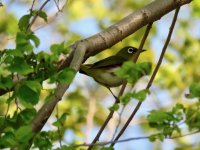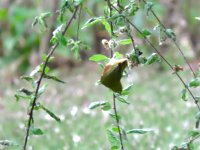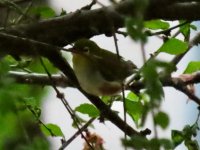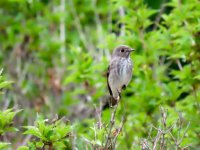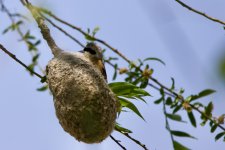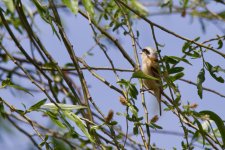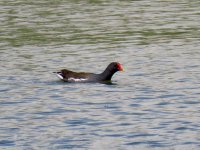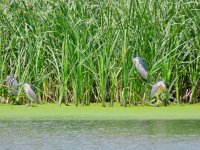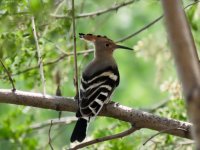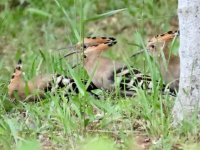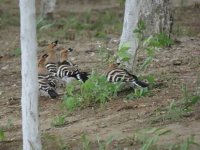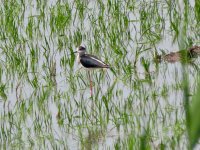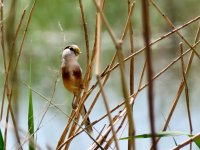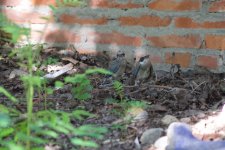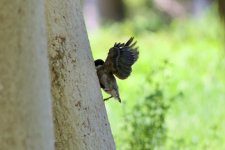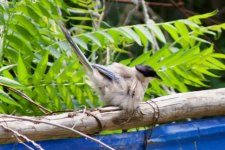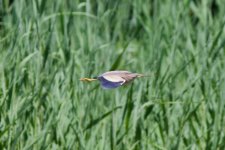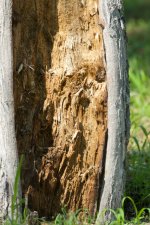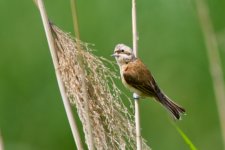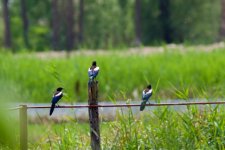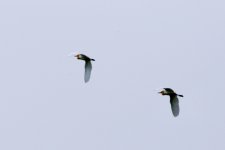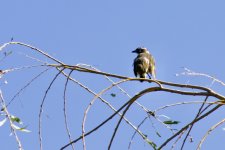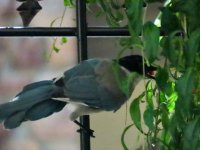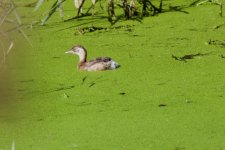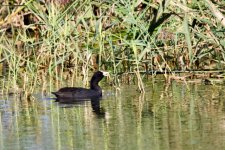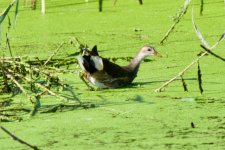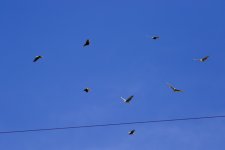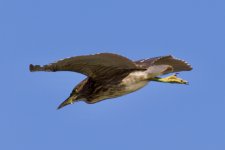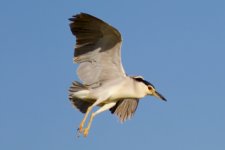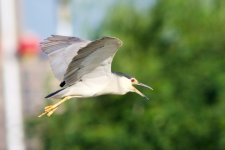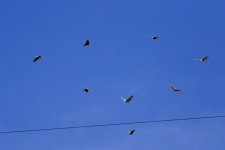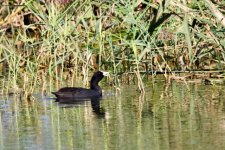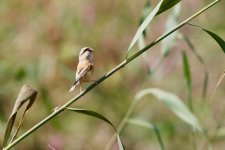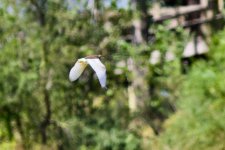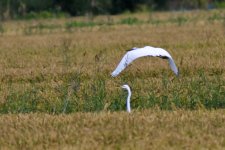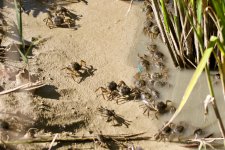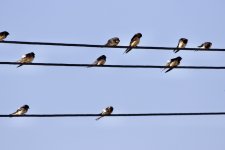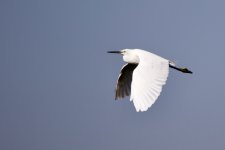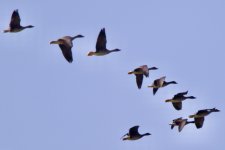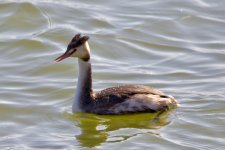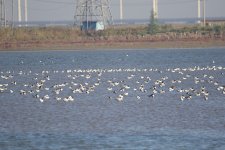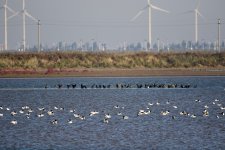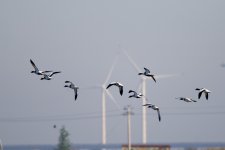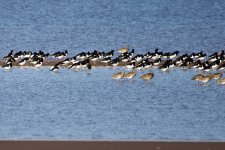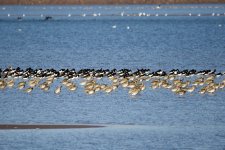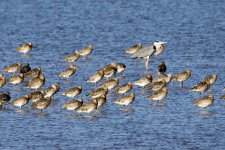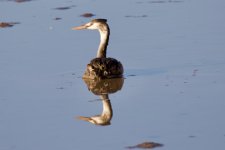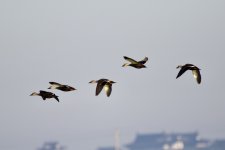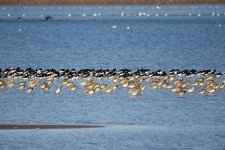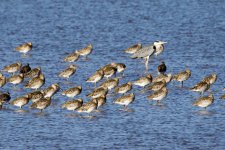Sometimes ignorance pays off. On October 12th the weather and tide charts being promising, I decided to undertake a trip to a previously unscouted but highly promising location. At it's southern most extent the Liaohekou Nature Reserve reaches the very northern most shore of the Liaodong Bay. Several years back a local acquaintance told me about it and tried to take me there but got lost on the way. Having done some further study recently, I found some information indicating the location of a visitor center located on the shoreline. Based on that, we hired a car and driver and managed to convince him to follow my directions to this place he had never heard of. After some delay due to road closures for construction with no detour indicated which resulted in several tries at alternate routes where the roads just petered out, we found a way around and indeed did find the way in.
View attachment 1410335
The driver slowed to a crawl as we passed through an open gate and what appeared to be a deteriorating, abandoned guard station where the road changed to a narrow poorly maintained dirt "road". Seeing no signs of life, he decided it was OK to proceed and almost immediately vast mudflats came into view bordered by numerous interconnected large ponds. The ponds would probably be brackish as they were right next to the mouth of the Daling River where it enters the Bay. Five hundred meters in I was excitedly calling to stop right here and let me out as masses of birds appeared on the ponds and in the air over the mudflats.
After some quick scans with the binoculars I spotted a sign nearby which seemed to be placed to indicate a narrow pathway onto the embankments between ponds. Looked perfect to me so ignoring my wife's shouted warnings of it being "dangerous", I followed the path through some tall weeds and quickly arrived at some excellent viewing locations.
Far-Eastern Curlew, Eurasian Coot, Pied Avocet, Great Cormorant, Eurasian Oystercatcher, Common Shelduck and more all demanding my attention at once!
View attachment 1410337View attachment 1410338View attachment 1410339View attachment 1410340View attachment 1410341View attachment 1410342View attachment 1410343
To further the excitement, as I was wondering what had suddenly caused all the commotion with the Pied Avocet, which were flying about in an evasive manner, an
Eastern Marsh Harrier suddenly plunged down and snagged a Coot that was standing right at the water's edge.
I spent probably 45 minutes snapping pictures and just enjoying the view when while moving location I spotted some small unknown bird staying in the weeds just ahead of me only popping up for a brief low flight forward to better cover if I got very close. Intrigued, I probably spent another 15 minutes trying to get a better view and observing. Photos proved impossible but I got several good looks. Very small with a reddish brown looking back and blackish tail which could be briefly seen running on the ground most of the time. Only quiet "chert" vocalizations. After much head scratching research once I got back home, I finally opened what I should have started with, Tom Beeke's
Birds of Dalian and bingo, he had photos of my mystery bird -
Pallas's Grasshopper Warbler! Now I really understand why they are so rarely reported.
Finally my wife was yelling at me from the road about "water coming". Oh, yeah, the tide! Our delays in transit had cut into my anticipated time. Hurried back to the car and sure enough, the mudflats were now covered with water and a
Great Crested Grebe ignored us from just a few meters away.
View attachment 1410344
We then moved on down to the coastline and indeed, there was the visitor center and a small parking lot, but it looked to be long abandoned. The tide waits for no one and indeed the anticipated mudflats there were now covered. Therefore after a quick check around that area produced only a few
White Wagtail,
Oriental Magpie and
Barn Swallow so we moved back to the ponds, which although also losing much of their mudflats, where still hosting many resting birds. At this point closer observation with the binoculars and later analysis of photos revealed
Falcated Duck, Eurasian Wigeon, Mallard, Little Grebe, Great Egret, Intermediate Egret, Little Egret, and a few
Black-Winged Stilt.
By this point truck drivers headed to the nearby oil rigs were smiling and waving to me and a couple stopped to ask if I was Russian. Apparently the driver lost a bet as the rider immediately demanded his payment.
At that point the tide was reaching full and my wife had plans for her afternoon, so we started back out but spotting some large white birds which just didn't look right for Egret, I halted things again and got out to investigate. Good thing I did, as the odd "Egret" turned out to be
Eurasian Spoonbill as soon as I got closer and put the binoculars on them! As I was enjoying that view, four more flew over in the background.
View attachment 1410350View attachment 1410351
Time really being up, we proceeded on out to find the gate down and the "abandoned" guard post now manned. I hadn't been hiding our presence at all and I am sure they knew what I was doing and just decided to ignore us as they just waved and lifted the gate after a brief delay. Subsequent discussions with local birder Chaofan Feng informs me that I just got lucky as they normally don't allow even Chinese citizens in.
There being too much to focus on everything, I'm afraid that I neglected the Gulls. I can say there were at least
Saunder's Gull, Black-Headed Gull and
Common Gull. Sorry about that Lancy

Some more random photos:
View attachment 1410352View attachment 1410353View attachment 1410354
Common Shelduck (Tadorna tadorna) 300
Northern Shoveler (Spatula clypeata) 10
Falcated Duck (Mareca falcata) 4
Eurasian Wigeon (Mareca penelope) 10
Eastern Spot-billed Duck (Anas zonorhyncha) 25
Mallard (Anas platyrhynchos) 6
Little Grebe (Tachybaptus ruficollis) 5
Great Crested Grebe (Podiceps cristatus) 3
Eurasian Coot (Fulica atra) 50
Black-winged Stilt (Himantopus himantopus) 4
Pied Avocet (Recurvirostra avosetta) 100 Clearly observed with photos - probable undercount
Eurasian Oystercatcher (Haematopus ostralegus) 125
Far Eastern Curlew (Numenius madagascariensis) 75 Clearly observed with photos
Saunders's Gull (Saundersilarus saundersi) 25
Common Gull (Larus canus) 25
Caspian Tern (Hydroprogne caspia) 6
Great Cormorant (Phalacrocorax carbo) 100
Gray Heron (Ardea cinerea) 15
Great Egret (Ardea alba) 5
Intermediate Egret (Ardea intermedia) 5
Little Egret (Egretta garzetta) 20
Eurasian Spoonbill (Platalea leucorodia) 6
Eastern Marsh-Harrier (Circus spilonotus) 1
Pallas's Grasshopper Warbler (Helopsaltes certhiola) 1 Very small - Reddish brown back - black tail - Stayed hidden in ground cover and only flushed briefly when very closely approached - Mostly remained on the ground, preferring to run rather than fly. Only vocalization was brief soft cherts.
Barn Swallow (Hirundo rustica) 200
White Wagtail (Motacilla alba) 3





